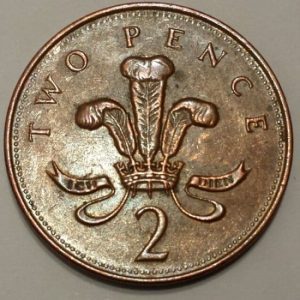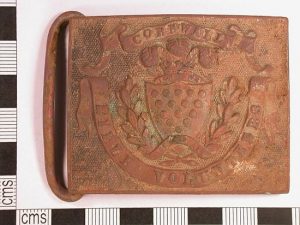Ich Dien – Learn About the German Phrase Used on British Coins
07/03/2021Daniel Fisher
Free & fully insured UK Delivery. Learn more
Secure & flexible payments. Learn more

Buyback Guarantee Learn more
British coinage is considered to have one of the richest histories, compared to any nation globally. Our long tradition of Kings and Queens has resulted in one of the world’s oldest coinage systems that have witnessed the reigns of several monarchs over centuries. When we study European coinage, Britain’s history is distinctive and different from the coinage of other European kingdoms and monarchies.
During the 19th century, there were approximately 20 ruling monarchies across Europe. Of course, the currency coins released by many of these monarchs featured a stylised image of the ruler and motif or a coat of arms on the other side of the coin. Now, British coins have had certain peculiarities in the past. These usually consisted of a slogan or a line embossed on the coin. However, who would’ve thought that the German words ‘ich dien’ could appear on a British coin?

Two pence coin bearing the inscription – ‘ich dien’
Well, the words ‘ich dien’ in the German language literally means ‘I serve’. These words appear on the coat of arms of the Prince of Wales. The words appeared as early as the 14th century, leading to several speculations regarding the origins of the phrase. Interestingly, these words have also been used by Edward the Black Prince. The phrase may have been adopted following an alliance or a meeting with a German monarch, but history has no record of any such event. Therefore, we may never know the exact reason why the phrase ‘ich dien’ was adopted.
It is customary for many royal houses to have an insignia or a coat of arms. This creates an identity that can be instantly recognised, much like a logo on a product. The Prince of Wales uses a heraldic badge as the royal emblem. The words ‘ich dien’ is imprinted on the bottom of this badge. However, the phrase was not used only on the emblem. The words ‘ich dien’ can be found imprinted on certain British coins over the years.

1870 belt plate from Cornwall with the inscription – ‘ich dien’
The most commonly found ‘ich dien’ coin is the two pence coin. The words appear on the reverse of the coins of this denomination that were issued between the years 1971 and 2008. Of course, this was not so long ago, and so many such coins can be found in circulation even today. You may have one in your pocket right now!
In 2008, his Majesty the Prince of Wales celebrated his 60th birthday. To commemorate this important occasion, a proof coin was minted and released by the Royal Mint. This coin has the words ‘ich dien’ embossed directly on the face of the coin, underneath a stylised image of Prince Charles. This proof coin is of interest to numismatists due to its uniqueness.
While the above are examples of recent British coins that contain the German phrase, many other notable coins do so too. The 1811 one penny “Bristol and South Wales” Coin also carries the Prince of Wales’s feathers and the inscription ‘ich dien’. Similarly, there is a British India medal, although officially not a coin in circulation, it carries the words, ‘ich dien’. This medal commemorates the royal visit of King George the fifth to India.
Our coin experts are extremely knowledgeable about collectable coins as well as bullion coins. Whether you’re an investor or a collector, you can benefit by giving us a call on (020) 7060 9992. You can also send us an email and we will get in touch with you at the earliest.
Image credits: Wikimedia Commons and Wikimedia Commons
Live Gold Spot Price in Sterling. Gold is one of the densest of all metals. It is a good conductor of heat and electricity. It is also soft and the most malleable and ductile of the elements; an ounce (31.1 grams; gold is weighed in troy ounces) can be beaten out to 187 square feet (about 17 square metres) in extremely thin sheets called gold leaf.
Live Silver Spot Price in Sterling. Silver (Ag), chemical element, a white lustrous metal valued for its decorative beauty and electrical conductivity. Silver is located in Group 11 (Ib) and Period 5 of the periodic table, between copper (Period 4) and gold (Period 6), and its physical and chemical properties are intermediate between those two metals.